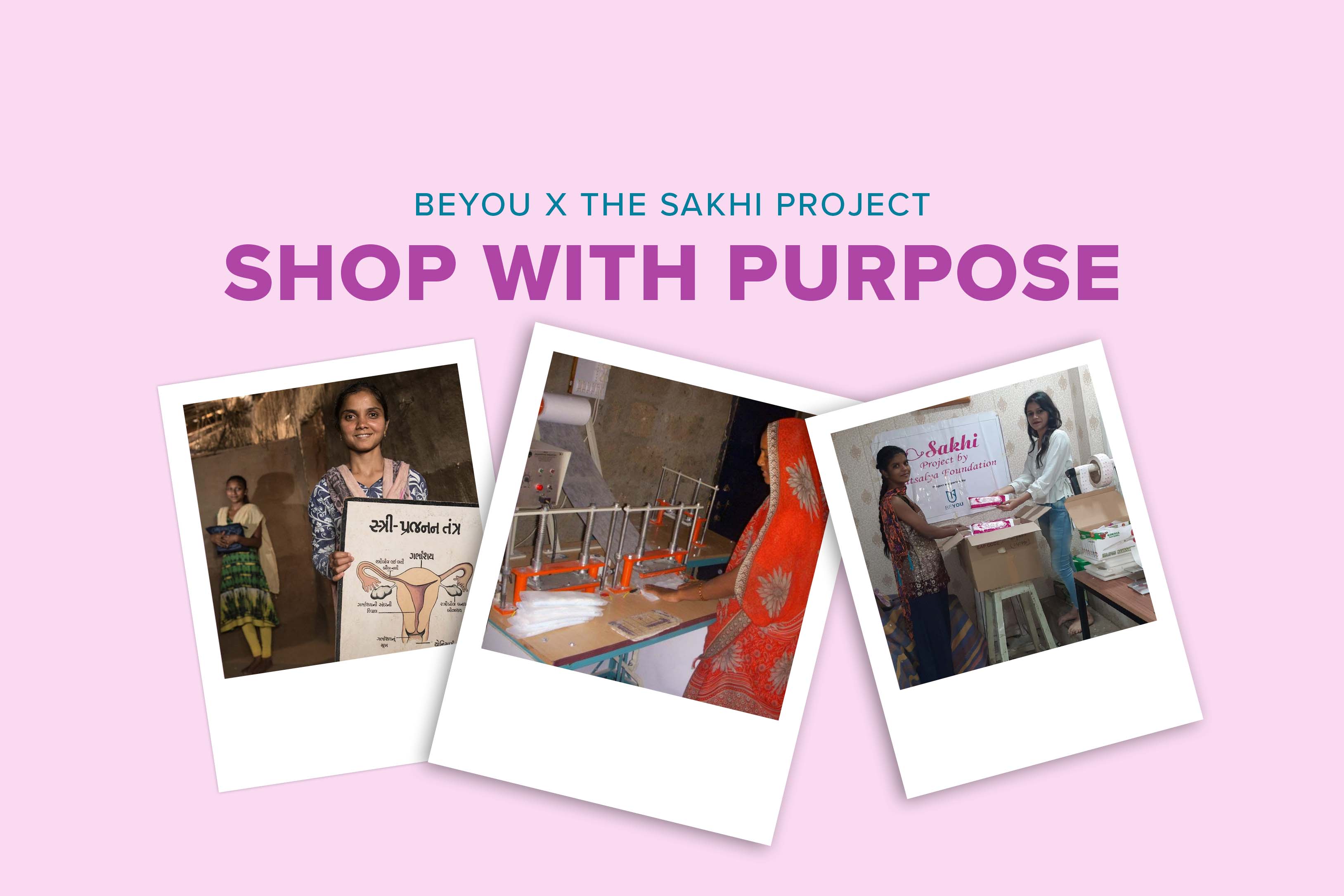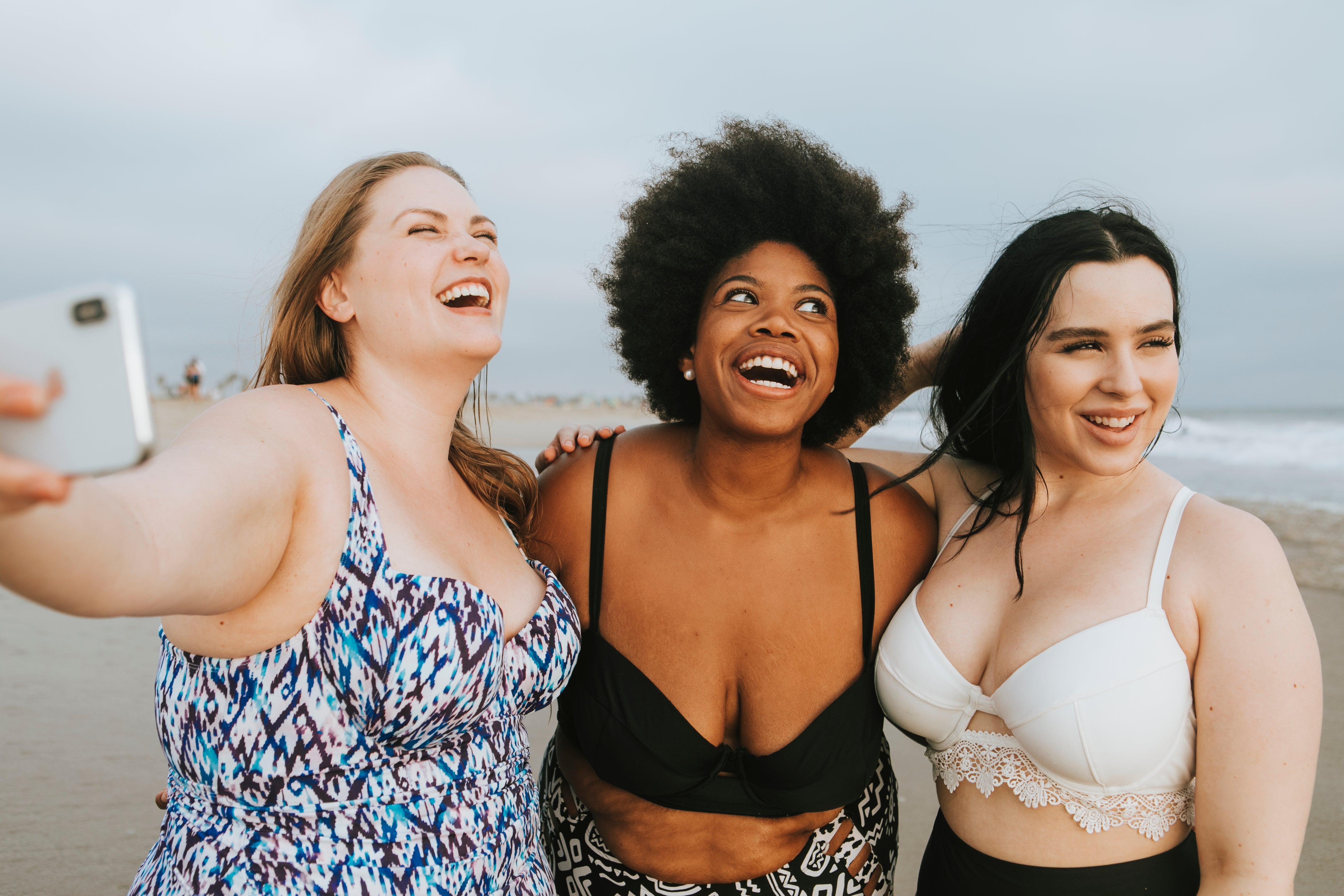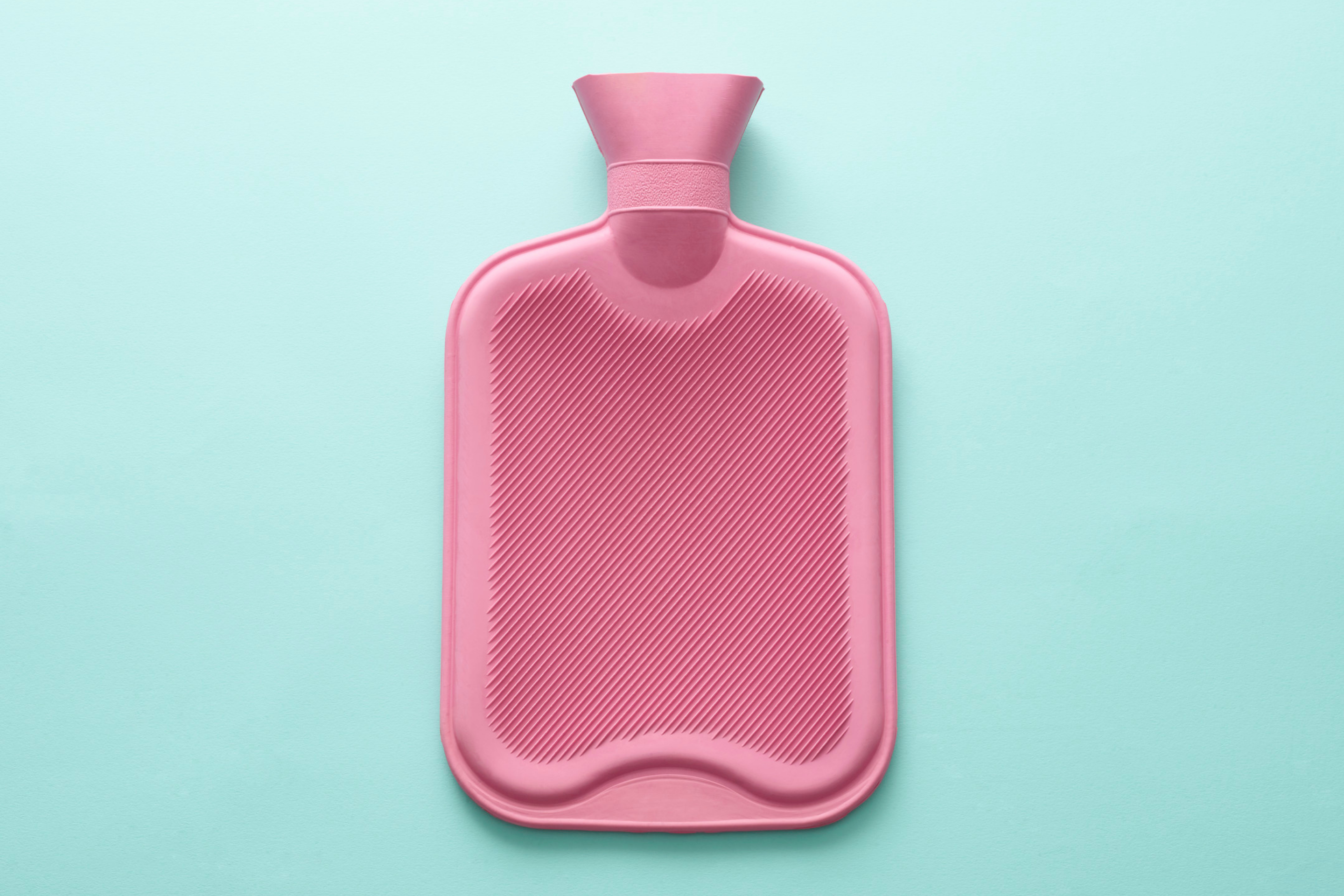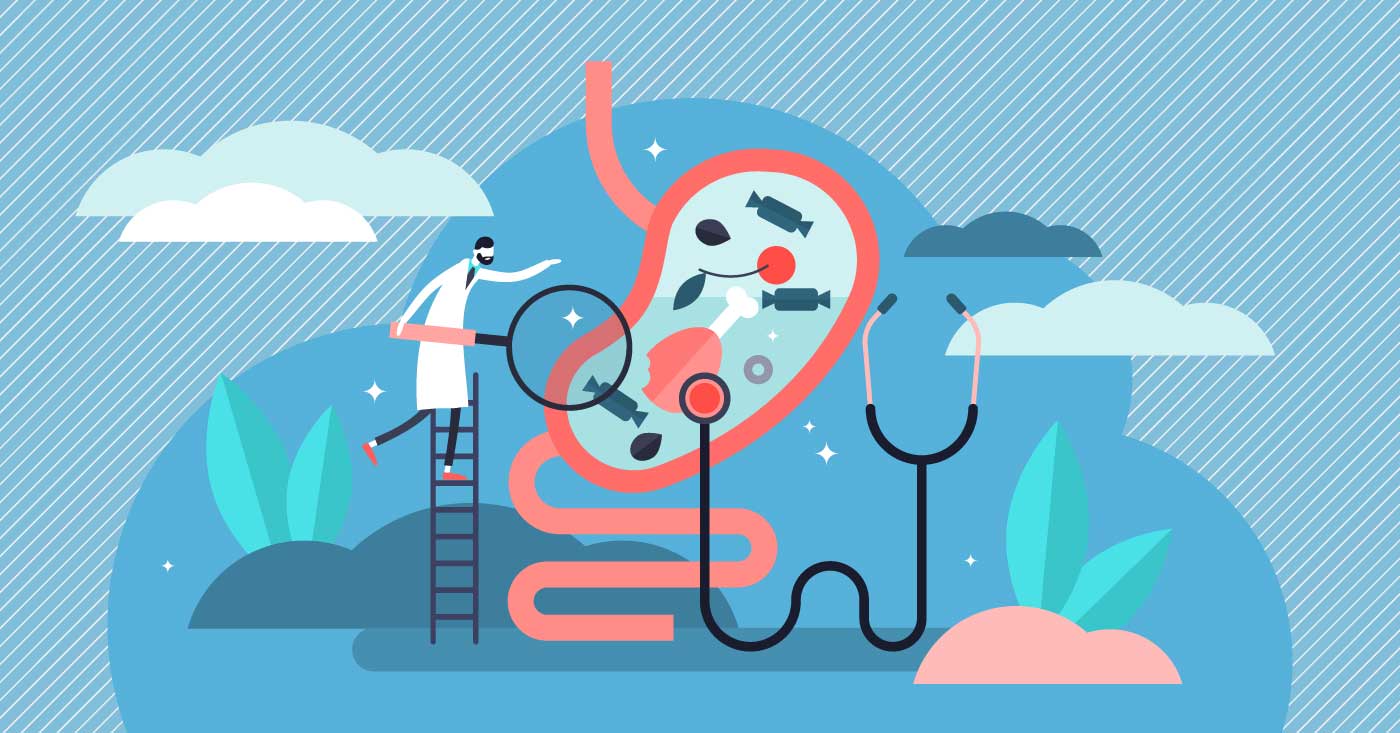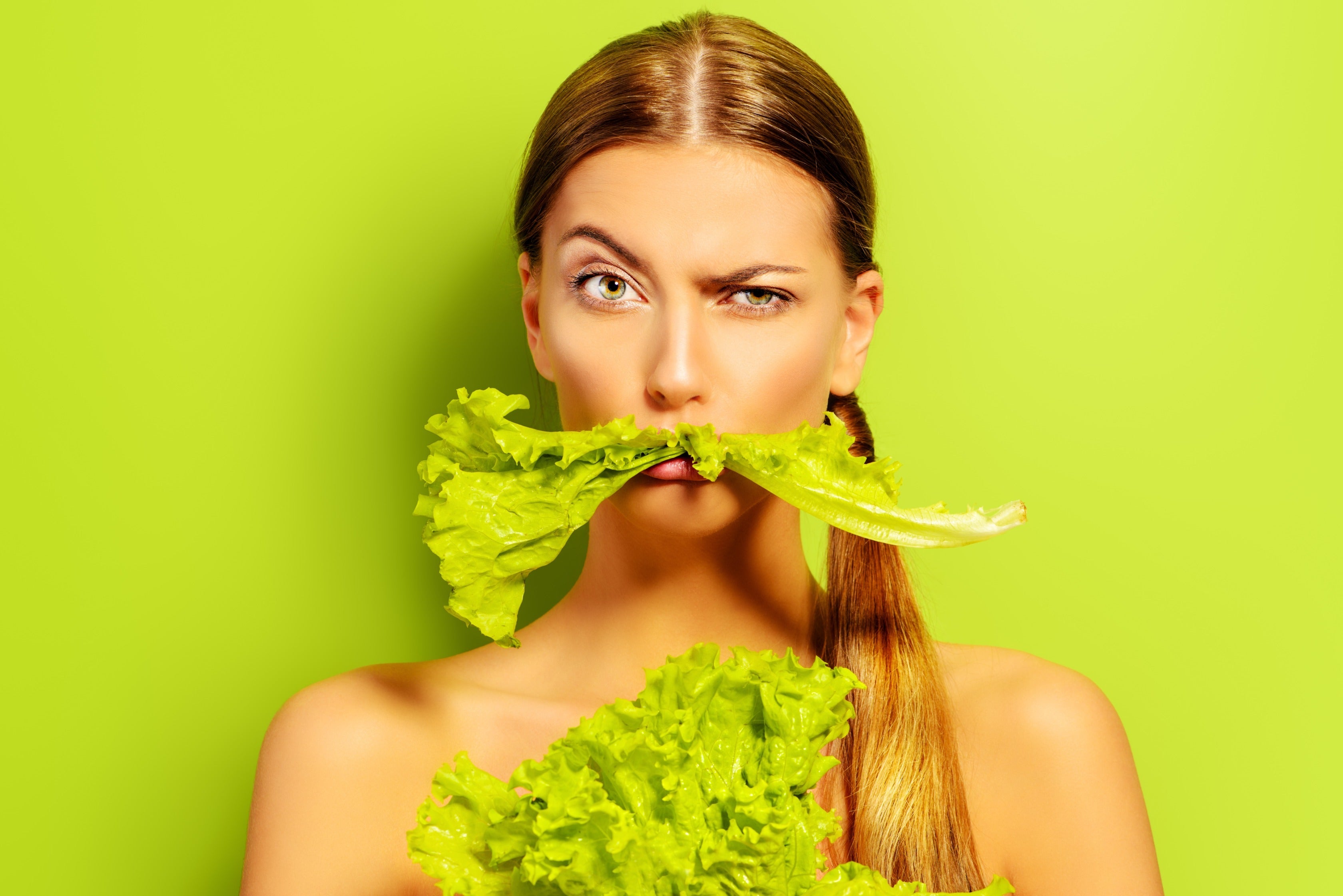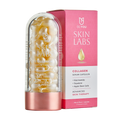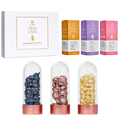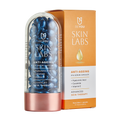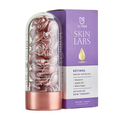How to Wash Your Hands Why, How it Works, Hand Sanitiser, Soap & MORE!
Mar. 22, 2020
The below is a summary of this YouTube video - we thought you might find it useful!
Hand Sanitisers
It is true that washing your hand is the number one way to prevent the spread of disease and infections. And so in light of the most recent pandemic, I wanted to jump on here and teach you the proper way to wash your hands, which I know I learned in nursing school. But prior to that, I cannot remember ever having a proper hand washing tutorial, other than just being told that I should do it. So you should wash your hands. But no worries, it is definitely time to talk about this. So I am here to talk all about hand washing, how it works with both soap and hand sanitiser. But before I get to it, please make sure you subscribe, click the notification bell, and then let's keep you and your loved ones safe from infection and spreading disease.
Eventually, I am going to actually take you to my bathroom and show you how to properly wash your hands. But before I do that, there's a few little things I want you to understand all about hand washing technique, this kind of science behind it, so that you can really get a thorough understanding all about why this works. And then hopefully, it will motivate you to keep washing your hands.
So I know currently right now it is March, 2020. I almost got that wrong. And we are in the middle of a pandemic with coronavirus. And so whether it be coronavirus or the flu, or you have a sick one in your home, or there's some other thing going around the world, hand washing is the number one thing you can do to help, first of all, prevent the spread of the disease because we don't want it to keep growing. And second of all, to keep yourself protected from disease.
So let's talk about good and bad bacteria. In this case with corona, we're talking about a virus. So there's different types of little thingies that can get on your skin, whether that'd be a virus, a bacteria, or a parasite, or just some dirt, that's just not good for you in general. It's probably not going to make you sick, but in general, not good for you. And so we don't want bad bacteria, bad viruses getting into our bodies and actually infecting us, but there is good bacteria on our bodies. And so to be obsessively washing or disinfecting our skin that actually can disrupt the normal, natural flora, we call, of the good bacteria in our body. You've maybe heard of taking probiotics or eating yogurt, and that helps to culture the gut so that we can help digest better. It actually protects us from disease. So bacteria in general is not a bad word, but there's good and there's bad ones. So whether we're talking about bacteria or viruses, we want to wash it away, and we want to get rid of the bad stuff. Okay? Now the way that we do that is by proper hand washing.
And so let's talk about how bacteria or viruses are transferred around. There's different modes of transfer. The most common would be touching transfer. So something, a particle, a virus, a bacteria. I'm going to probably say bacteria only because it's just easier. You can always loop in virus, parasite, other types of... That's really it. Things that can cause disease or harm you. But let's say there's a bacteria on my hand. I go and I shake your hand. That bacteria now transfers to your hand. This hand now is covered in bacteria.
And then I'm like, "Oh, my nose itches." And now I've touched my nose. And that bacteria now is on my nose. I breathe in a little, and there's a mucus membrane, or it goes into my lungs where there's more susceptibility to it actually entering the body because the skin is the best barrier of defence that we have. If bacteria lands on my skin in general, it's probably not going to permeate the skin. Most don't, or viruses don't permeate the skin, unless there's a break in the skin. It needs some sort of entryway. So just having bacteria on my hands or viruses on my hands is not the end of the world, so long as I don't transfer that to a place where it can get into my body.
And so now that I've touched my nose, and I breathed it in now, it's in my mucus membranes of my nose, of my mouth, maybe of my respiratory track. You think about it goes down my throat into my lungs, or if it sits there and then I swallow, it goes into my digestive tract. And that potentially, depending on the virus, the bacteria has potential to grow and multiply because now it has a food source. It has a host where now it can say, "Oh, I'm going to latch on, I'm going to insert my DNA into this body and replicate and grow/stimulate an immune response."
Now, we are exposed to bacteria and viruses all the time, all the time, all day, every day we come in contact with harmful bacteria. The good news is we have immune systems that kill them. So that bacteria, now... I probably just breathed in something, hopefully not coronavirus, but some things in me. And now my immune system is going to go, "Whoopsies. You're not from here. So let me go and kill you. You die. I don't get sick." So the average person is exposed all the time.
The goal during a pandemic, or when we have more risk for disease, or when there's somebody sick in your household, so you know there's something going around, a little bug going around, is to limit exposure for yourself and keep yourself safe. So number one way, our hands go everywhere, right? I'm not going to touch my elbow to my nose or my mouth or my eyeball. That's never going to happen. My elbow is a safe place. If there's some germs on there, okay. But our hands are going to be really susceptible to that. That's why washing is so important.
Now there are two ways to keep your hands safe or to kill off that those viruses and bacteria. One would be hand washing. The other one would be hand sanitiser. Now, if we're going to compare the two, hand sanitiser is not as effective as hand washing. There are certain germs, we'll call them that, that cannot be treated or killed off by hand sanitiser, and really can only die from hand washing. So when in doubt, guys, if you have access to soap and water, go there and wash your hands. But we don't always have access to soap and water, and so hand sanitiser is a great alternative.
So when there are germs on my hands... Imagine my hands are covered with bacteria. What we need to do is kill those bacteria or slow its growth, and hand sanitiser is going to slow its growth. Now, when you're looking for a hand sanitiser, I literally have, of course, scoured my house for all the little samples of hand sanitiser. Thankfully, I actually have a good amount in my house.
I had bought this one, which is the large. Personally, for me and my household, this will last me through pandemic. And so really, this is going to be enough, but this is just a Walgreens brand. I have another Assured hand sanitiser. I have an Honest brand here, which by the way, this Honest brand smells... The grapefruit smells like heaven. It's my favourite. I just spray it... I would perfume myself in it if I could. But don't do that because it is technically alcohol-based, but it's so good. And then there's the Bath and Body Works little hand sanitiser and a Purell. So no matter what hand sanitiser, there's tons of brands. I'm not going to endorse one brand. They're all great. But what you're looking for is one with at least 60% alcohol in it. I know there's lots of natural brands out there, but guys, at this point, with this being such an issue, and when you're really trying to prevent disease, you need that amount of alcohol, which actually dries out the virus where it's like... shrivel up, and then I'm either going to die, or it's going to slow its growth.
That's the key with hand sanitiser. So hopefully it slows its growth, so that your hands don't grow and are covered in bacteria, and then you go to touch whatever it is. Then eventually, you still need to be washing your hands. So this is kind of like, to me, the in betweener stuff, when you don't have access to soap and water, use hand sanitiser, but then always remember, we're going to wash our hands pretty regularly. Meaning anytime you go to the bathroom, anytime you touch any kind of raw foods, anytime you come in contact, I want to say with the outdoor world, but that's not totally realistic. But if you've been shaking a bunch of hands, pay attention to what you're touching, prior to using a hand sanitiser or washing your hands.
When you use hand sanitiser, what is the proper way to do it?
Okay. You definitely, and I'm going to just use this one because it's the easiest one, when you're using it, first of all, you need enough hand sanitiser. So the little... I know we're passing around the hand sanitiser, it's just a little bit, and you're like, oh, and you're kind of dry. If your hands are dry, when you're rubbing together, you don't have enough. And actually that probably wasn't enough. That felt like it wasn't enough, but it probably is. In general, always err on the side of one full squirt. I know it seems like a lot, but enough that your hands are going to feel wet. You can see it's flying around. Now, when I'm putting it on my hands, I want to be very cognizant that partially what kills the bacteria or the germs, virus, whatever is the friction.
So I am rubbing vigorously, and not just here. I want to rub on the top. I want to rub on the side. I'm going to go all the way up to my wrists. And then I'm going to really focus on the tips of my fingers. This to me is the easiest way to get under your nails. I know it seems kind of funny looking, but you're not going to probably scrub with hand sanitiser there. But if you do that, it'll get somewhat under your nails. In this time, I have actually cut my nails back. Nails are a vector. They carry bacteria under them. This is why health care providers technically should be having shorter nails because this is where the bacteria can collect. And then it's not going to have as easy access to a hand sanitiser to dry it out and kill it or to hand washing.
So you really do want to be very particular about getting under your nails. My nails are still kind of long, but they're not usually this short, so we'll go with it. Okay. So under the nails. And you are rubbing until it is completely dry. I see people where they're like rub, rub, rub, and then their hands will still be wet, and then they'll go to touch something. You are not safe yet. Okay? Or they'll rub, rub, oh, that's good, and they'll dry their hands off on themselves or on a towel or something. That's not enough. Okay? So when you're using hand sanitiser, not hard, but you want to rub with friction, get all the way around the hand until it's fully dry. And that may take a second, meaning around 20 seconds, which is your key timeframe for the rub, the friction, the killing off of the bacteria.
So now that I've showed you how to use hand sanitiser, we're actually going to head to my bathroom, and I'm going to show you how to wash your hands with soap and water. Let's get over there.
So when we go to wash our hands, I want to make sure that you have all the supplies right here, readily available for you. So you're not half soapy, running for different things. And we want to do it properly from the first time. So we're not continuing to pass that bacteria all over your house, all over your loved ones. So the things you're going to need are, clearly, running water. The key here is we want it to be running. So rather than a basin full of water. Now, if you don't have another option for running water versus a basin of water, clearly a basin is fine.
But what we don't want is all of the germs, all of the microbes, sitting in the water, and then you're rinsing with the dirty water. If you can avoid that, we want to do that. So we want a running water. We need some sort of soap. I have here some yummy Bath and Body Works soap. So you can have whatever soap you want. It does not have to say antibacterial on it. That is one of the common misconceptions. It will still work. The way soap works is that it has both a side that binds to water and then to lipids. You think about oil and water, how they separate. Soap, if you add soap to it, whether it be oil on your skin or oil on a dish or something or water, it will wash it away. It all of a sudden becomes nice and smooth, rather than sticky. Imagine butter on your hands under water. Butter won't get off, until you add soap.
Because soap is going to bind to whatever you're trying to remove. That includes dirt. If your hands are visibly soiled, you need to use soap and water. Healthcare professionals, if we get anything on our hands, we use soap and water. Hand sanitiser does not wash it away. The goal would be release the bacteria or the germs, the microbes from your hands. And then you're rinsing them down the sink into dirty water. It's goodbye, germs, down there. So that's the goal of soap. You need some sort of soap.
And then you also want to think about, once your hands are clean, you need to dry them somehow. And so I have two options here. One is paper towels. And as much as I am all about reducing waste, this is an option because, now mind you, I did just touch them with my dirty hands, now that I'm thinking about it. For the sake of the matter, these, in theory, would be sitting here, clean. And so when you go to grab one, my clean hands are going to the paper towel, and then I'm now drying with a clean something. Versus also with the towel. So I just grabbed a new towel. Again, I'm touching it. For the sake of the matter, we will go with it. But it's a clean towel that, if you're drying your hands, when they're dirty still, or say they get wet or you cough on them and you're like... go on the towel. That's not okay. So we also need to be aware of what we're doing with our towels, that they are staying clean for us, so that when our hands are clean, we can dry on something clean. So we're not continuing the spread of that bacteria, those germs. And now we're actually clean. That's kind of the cycle.
So I'm going to show you how to do it. You're going to turn on the water. I'm turning on the warm, only because I like it to be warm, but it doesn't even have to be warm water. It will still work. Now think about, I have touched this with my dirty bacteria-filled hand. There are germs here. Now, I don't want to go back to that and touch it after I've washed my hands. So that's on, I'm leaving it on. Online, on the CDC... and again, I will link some links down below for you to follow up, if you want more information, it does say to turn the water back off, but in my mind, I'm like, that doesn't make sense because there's bacteria now on here.
So I'm going to wet my hands. Now also keep in mind, the top of this, I'm also transferring bacteria to the top of my soap, which is fine because I still have dirty hands. But note, this is dirty. This is dirty. I have a full pump of soap. And I'm going to start rigorously rubbing my hand. And the key here is, what this is going to do is remove dirt. It's going to remove bacteria. And then any kind of microbes that are on my hands, on my skin, it bursts their bubble, so that the soap actually binds to the bacteria. And then it's going to burst them, so that they either die, or it's going to release them from the skin. So they're no longer sticking to my skin anymore because the soap is slippery to get them slip off. And then they're going to be washed away, when I wash my hands.
Now the key here, too, is that you can't just wash your hands, da da da, soap here, and we're done. I want to wash all the way up to my wrists, and we're vigorously scrubbing. Because that movement, that friction helps to break down the bacteria, the viruses, the parasites, the whatever they are. The germs. And so I'm doing the inside of my hands. I'm doing in between my fingers. I'm doing the tops of my hands, the side of my hand, up my wrist. I rub, rub, rub. Now, I also have to do this hand. Might need a little more water, which I do. I'm going to go up my wrist all the way around.
And then I got to get in my fingernails. So one of the ways I do this is, I like to rub under like this. If you don't have long fingernails, it's easy to do it on the side of your hand, once you've washed there. You can also get a little brush scrub. If you really do have long fingernails, I really recommend that you actually get a little brush, and you scrub under your nails. Okay? So I've gotten under my nails. I've rubbed at least 20 seconds. They say sing Happy Birthday, pick a song, find an affirmation, learn something to say, make up something with your kids. But really, the key here is if I do this for 10 seconds, the amount of bacteria washed away is not enough to prevent the transfer of disease, virus, bacteria. We needed at least 20 seconds, 30 seconds, even better, if I can.
And then I am going to rinse under the water, and I'm still rubbing. And now it's really hot. So I'm going to go fast because I'm going to burn my hands off. Because if I were to touch this, this is still dirty. So I'm rinsing. Now, here's the deal. I'm wet. I have to dry my hands, and I have to turn off the water. So the key here is, I may rub my face with my wrist at some point, but probably anywhere here, I'm an elbow girl. Turn off with an elbow and then dry off. Now, mind you, this is clean. So I'm going to use a towel here, or I'm going to grab a paper towel, dry, dry, dry, being careful that I'm also not being like... and wiping up my arm, because now the towel is dirty. So be thinking about where... imagine if I had powder on my hands or something, a coloured powder, and how if I were to touch, there's now bacteria all over the place.
I don't want us to get OCD about this, guys. It's okay. You can be exposed to bacteria, but especially during this time, and especially when you know that you've come in contact with somebody that's sick, or you know that you've come in contact with something, like raw meat or something, that could cause you to get sick, we just want to be extra careful, thinking about the pathway of what's going to get us dirty, get us sick, transfer germs, bacteria, whatever.
Now my hands are clean. So I am totally reset. And now mind you, I'm going to go on with my life, and I'm going to touch the light switch when I leave, and I'm going to touch my phone, and I'm going to walk into the next room and touch other things. So there are going to be germs that are transferred back to my hands.
The key here is that when you're with somebody that's sick, or you cough in your hand, or if somebody sneezes on you, you're like, "Ah, there's droplets on me," germs, bacteria. I'm not touching that. I'm not bringing my arm to my face. I'm saying, "Let me go to the bathroom and wash all of those germs off."
The other little tip here I have for you is, think about all the things that you touch frequently. Grab your disinfecting wipe, grab your disinfecting solution, whatever it may be. And particularly phones, keys, steering wheel, door handles. Those are probably my main things, my purse all the time. The things you touch regularly, you also want to be regularly disinfecting. I disinfect my phone, even in regular life, probably two to three times a day because our phones, we're on it all the time. Now I pick up my phone. That's covered in bacteria. Guess what? This hand and now this hand are all covered in bacteria. So we just want to be aware. We're not stressing about it, but we're being cognizant of the transfer of bacteria and then proper hand washing technique.
So the keys here are going to be 20 seconds with either warm water or cold water. Cold water is going to be less irritating on the skin, which is good, but I like warm water. Rubbing, rubbing, rubbing, that friction and that time on all surfaces of your hand, including under your nails, are going to be what washes away the bacteria down the sink, away from your family, and keeping you guys nice and safe and healthy.
So I hope that was super helpful for you. Like I said in the beginning, I don't know if I've ever been taught the different process and the steps and the why behind it. And hopefully with a little bit more why, you're going to be more and more motivated to continue to wash your hands. Now also think about, once you've washed your hands, just be cognizant of where you're placing your hands and how long it's been and who you're touching, especially with a newborn. Your newborns, definitely you need to wash your hands prior to picking up your newborn. Now, if you've been holding your newborn, and you set your newborn down, and then you pick them up, they're going to be more used to your bacteria. But with visitors and with anybody else in your household, they absolutely need to be using soap and water to wash their hands.
I always say throw some hand sanitiser around the house, although right now it's hard to get, but when we can get it again, throw some hand sanitiser around your house. When people come over, they should be expecting to wash their hands. If they're offended, they can get over that. You're protecting your infant. You're protecting your household.
This may seem like a super simple video. And I hope that it is for you guys, to dull it down, to make it, first of all, really easy to do. And second of all, also recognize that this is a very simple, inexpensive step to helping prevent the spread of disease, infections, viruses in our world today. If you want more from me, guys, I just want to let you know, I am still open for business. I have so many virtual options available. I know, especially during this time, that there's lots of uneasiness, as far as visitor policies and access to resources and childbirth classes cancelled and all of that. I do everything online already. I have virtual doula services available that I currently am doing actually with my current clients, somewhat.
So I am here for you during this time. I know it's stressful, but also we have to recognize that wash your hands, prevent sick visitors from coming. And mind you, if you want more of this, I do have a new class on my website that is all about infant safety. It also includes infant CPR and choking. So in this time, I know your class has been cancelled. Usually we do these in person, but I'm like, you need access to this information, and there probably isn't going to be access to classes like this for a while. So head on over there, get going with an infant safety class on preventing disease and infection in your infant, what that looks like, and how to protect your family in that time. I am here for you. You know how to reach me. Everything's in the description box down below. Please don't forget to subscribe, like it, comment, share it with a friend. And then until next time don't forget to flex and flow, and I will see you soon. Bye.
Let's do it. We ready? We ready? This may seem like a super simple... let me try that again. Okay. I will also... Try again. Hey, we're killing them. Yay. Killing them bacteria. These are very soapy... Happy birthday to me, actually, that's appropriate. Happy birthday to me. Happy birthday, dear Sarah. It is actually my birthday. Happy birthday to me. Okay, that wasn't 20 seconds.
What are you waiting for? Click here to buy hand sanitiser for you, your workplace, your home, or even get some sent to your loved ones
